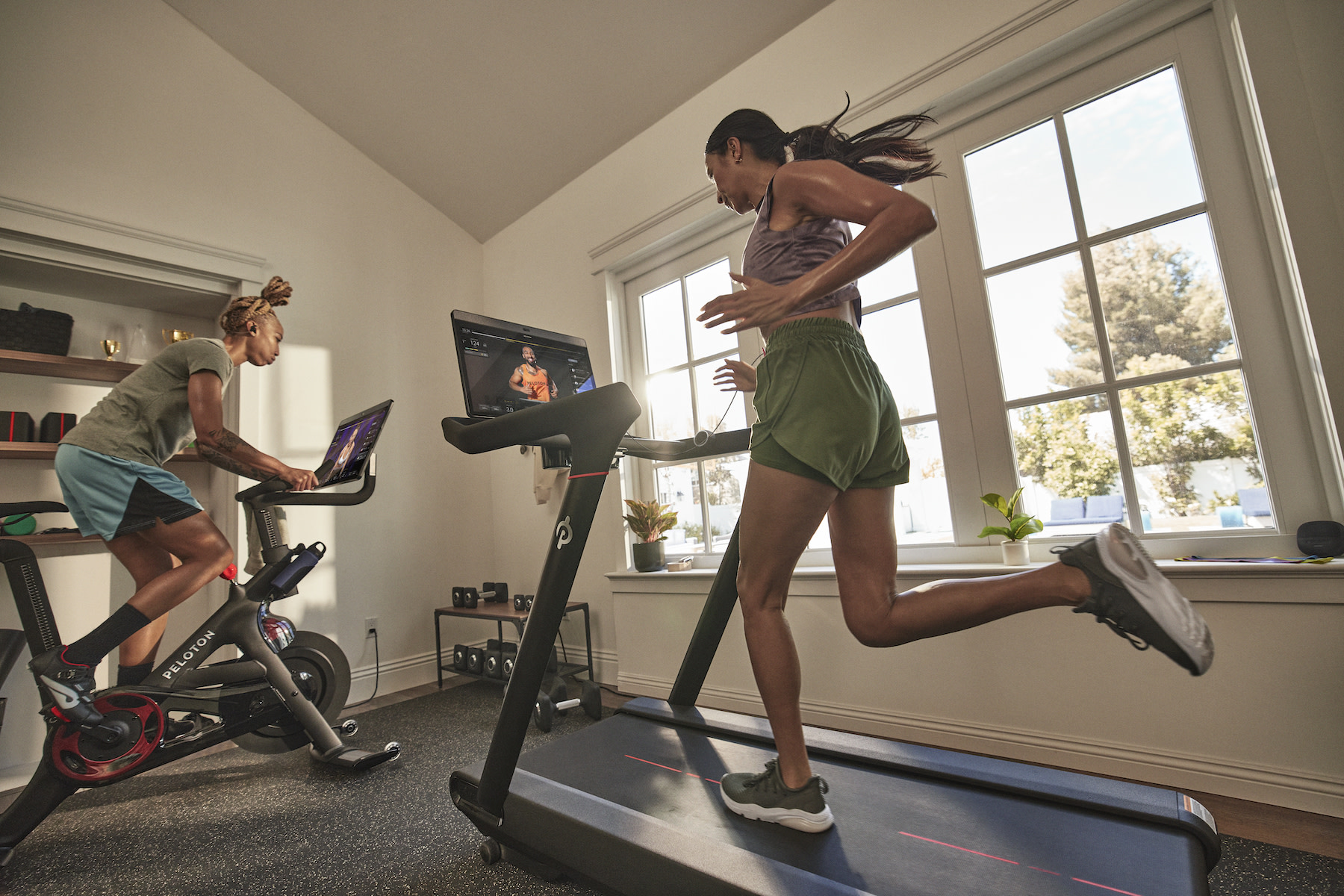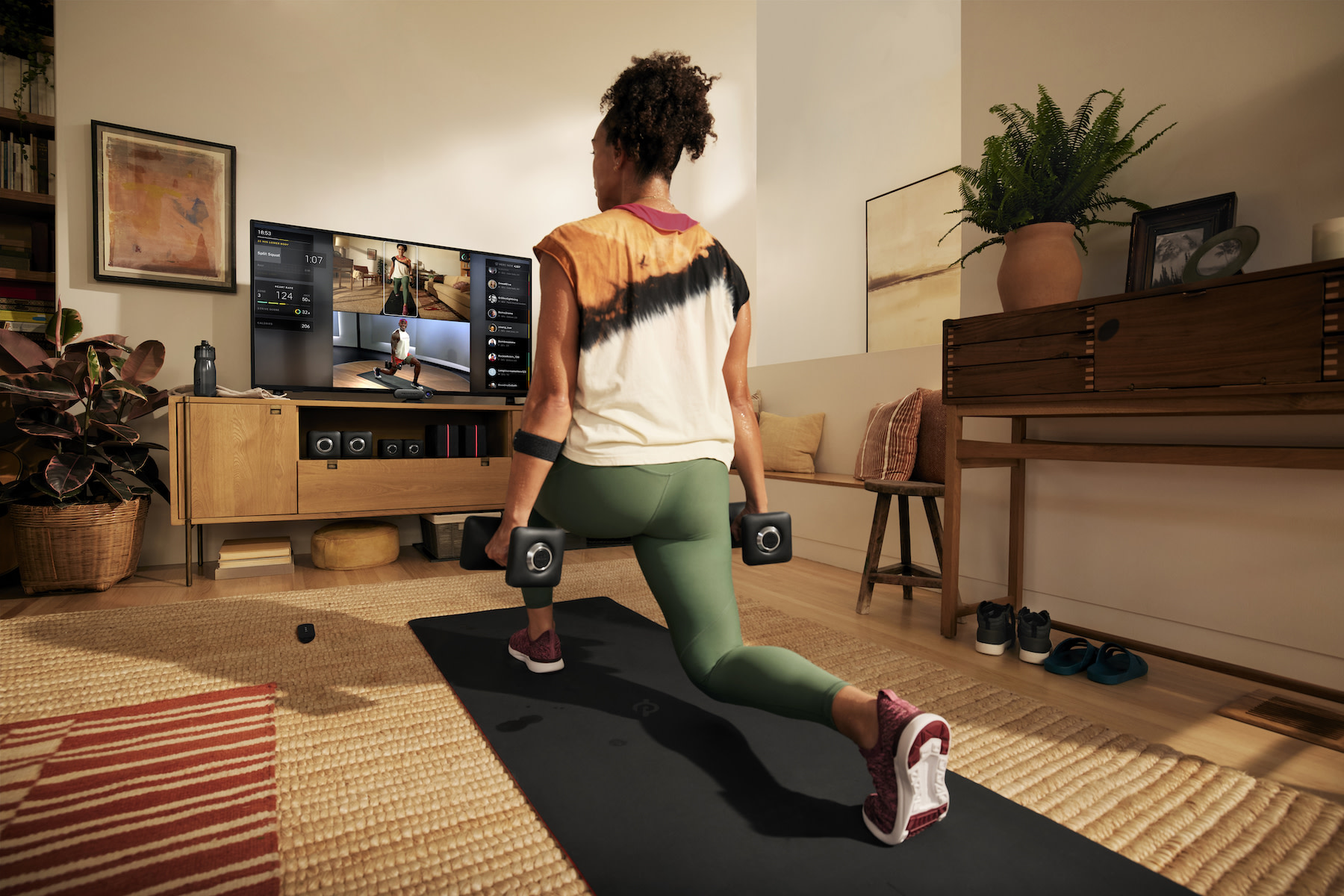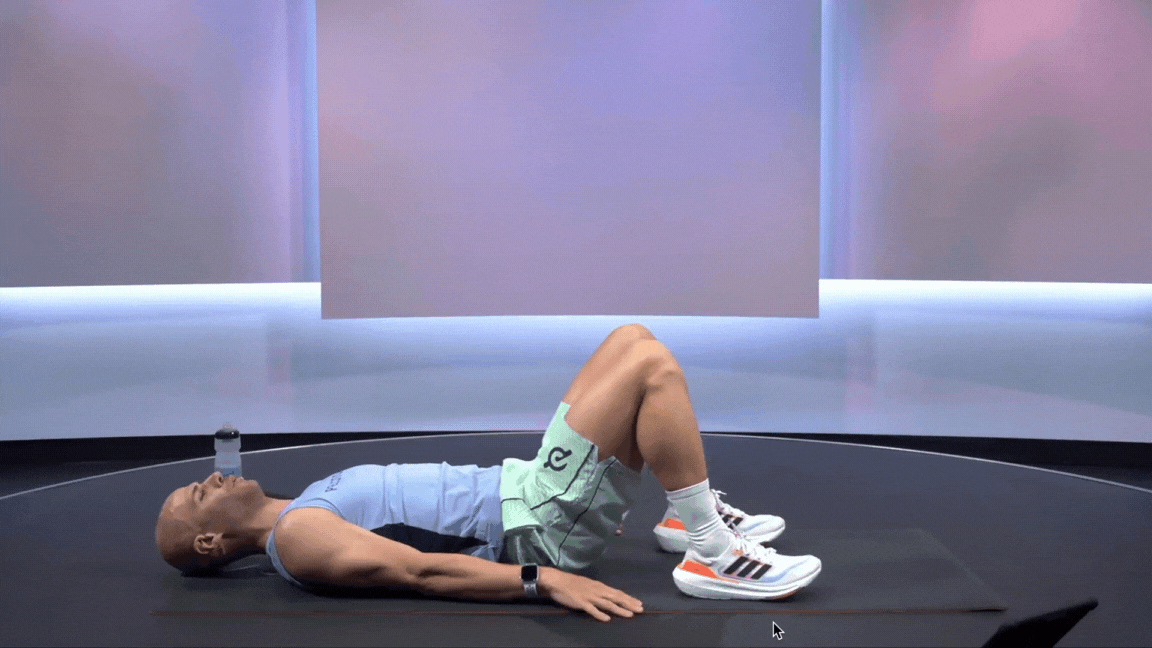
This Is How to Tell If You're Quad Dominant—and What to Do About It
Find out how to know if you’re prone to quad dominance, and how you can adjust your workout routine accordingly.
By Renee Cherry•
What Is Quad Dominance?
How Can You Assess Quad Dominance?
Is Quad Dominance Genetic?
Is It Bad to Be Quad Dominant?
How Can You Fix Quad Dominance?
The 7 Best Exercises for Quad Dominance
As you reap results from a consistent workout routine, you might notice that your muscle strength and development seems more prominent in some parts of your body than others. For a lot of people, this means that quad gains come easily, while their hamstrings and glutes lag behind. They might notice regular soreness and tightness in their quads, yet struggle to even feel your glutes engage during exercises like squats.
If that resonates, there are a few things you should know about a type of imbalance called quad dominance. Consider this your complete guide to the topic, with details on the factors that can contribute to quad dominance, how it relates to injury risk, and specific exercises you can add to your routine to restore balance.
What Is Quad Dominance?
Before diving into quad dominance, it’s important to understand the role of these important muscles. The quadriceps, or “quads,” are a group of four muscles situated at the front of your thighs. Together, the muscles allow you to flex at your hips or extend your legs at your knees, and proper quad function can contribute to healthy knee and hip joints. Your quads impact your ability to carry out daily activities like climbing stairs or standing up from a chair.
Your quads are part of your anterior (i.e., frontal) chain of muscles, while muscles like your glutes and hamstrings help make up your posterior (rear) chain. Many lower body exercises require you to recruit muscles in both your anterior and posterior chains. When performing these movements, it’s possible to rely too heavily on your quads, and not enough on other important muscles, a concept referred to as quad dominance.
“Quad dominance occurs when a person recruits their quads preferentially during squatting, lunging or other lower-body dominant activities, when, ideally, both the quads and glutes/hamstrings should be recruited to perform the exercises,” as Michele Olson, Ph.D., C.S.C.S., senior clinical professor in the Department of Sport Science and Physical Education at Huntingdon College, puts it.
In general, those who are quad dominant mainly rely on their anterior chain rather than a joint effort between their anterior and posterior chains during lower body exercises, echoes Braden Romer, Ph.D., C.S.C.S., associate professor and exercise science fellow director at High Point University.
How Can You Assess Quad Dominance?
If you’re wondering whether or not you’re quad dominant, take a look at how you land jumps. “A hallmark indication of poor posterior muscular function is excessive knee valgus, or a knock-knee type landing pattern, when landing from jumps,” says Dr. Romer.
You may also find that you have trouble keeping your pelvis and trunk stable during exercises that require a deep bend in your knees and hips, such as squats, says Dr. Romer. Your glutes play a major role in stabilizing your pelvis, keeping your pelvis properly aligned instead of tilted during these exercises.
Additionally, if you’re habitually quad dominant during exercises, over time you’ll likely notice more soreness and fatigue in your quads compared to your hamstrings and glutes after your workouts, says Dr. Romer.
Is Quad Dominance Genetic?
Yes, your genetics may make you more or less susceptible to quad dominance. Your genes play a role in how easily you’re able to build muscle in general, notes Heather Milton, M.S., senior exercise physiologist at NYU Langone's Sports Performance Center. Genetics also contribute to the proportions of “type 1” (slow twitch) and “type 2” (fast twitch) muscle fibers that make up your muscles, she says.
“Type 1 fibers are responsible for slower more repetitive movements and type 2 fibers do more powerful and quick movements, for a shorter period of time (think of the body of a marathoner versus a sprinter),” says Milton. People who have a higher proportion of type 2 fibers in their quads may be more prone to quad dominance from increased power and explosiveness during exercises like squats, jumps, or sprints.
That said, your movement patterns—during workouts and your daily activities—play a greater role in quad dominance than your genetics do, according to Milton. Unsurprisingly, a sedentary lifestyle isn’t ideal. “We tend to hunch over, sit and do other movements in our daily life that lend towards quad dominance,” says Milton. “When that carries over into sport and activity, it further exacerbates the issue.”
For example, if you’re an avid cyclist but you don’t include adequate cross training in your routine that engages your posterior chain, that could further contribute to quad dominance. “Because cyclists sit on the seat with their trunk angled forward—going from flexion at the hip to extension when pedaling—the quads can get tight and overworked,” says Dr. Olson. “Also, cyclists who push down on the pedals to create the pedal circle without pulling the pedals up use the momentum created by the quads pushing down to complete the pedal circle. So, the glutes and hamstrings are underused.
Cycling predominantly engages your quads, but it also works your hip flexors, hamstrings, calf muscles, and anterior tibialis (a muscle in each shin). When you maintain consistent pressure throughout the entire pedal rotation, that helps ensure you’re not overusing your quads, as Ann Trombley, MS, PT a physical therapist, cycling coach, and owner of Trail Master Coaching and Physical Therapy just outside of Boulder, Colorado, previously told The Output. While you don’t necessarily have to avoid it altogether, the practice of leaving the saddle, dialing up your resistance, and slowing your cadence disproportionately engages your quads and increases your risk of injury, she explained.
And if hitting the treadmill or pavement is your favorite form of exercise, quad dominance could potentially hold you back from becoming a better runner. A 2014 study published in The Journal of Strength & Conditioning Research examined the relative hamstring and quad strengths in female runners. Runners who had a higher ratio of hamstring strength relative to quad strength were more efficient in terms of the energy they expended while running. The researchers concluded that runners who are more quad dominant may benefit from hamstring exercises.
Is It Bad to Be Quad Dominant?
When you allow your quads to overcompensate for your hamstrings and glutes, that can potentially lead to other issues. “When the quads are stronger or more dominant than the hamstrings, this can lead to decreased dynamic knee stability in sports,” says Milton.
That may put you at higher risk for injury. “An athlete or individual displaying quad dominance is [using] a less than optimal muscle recruitment pattern,” says Dr. Romer. “In addition to longer term concerns with musculature development, the lack of engagement of the posterior chain raises concerns ranging from reduced postural stability, overuse injuries such as IT Band tightness, and even non-contact ACL tears.”
One study published in the Clinical Journal of Sport Medicine this year looked at the relationship between hamstring and quad strength to ACL injury in female athletes. Women in the study who eventually developed ACL injuries had less hamstring strength, but not quad strength, compared to uninjured male athletes. On the other hand, uninjured females had less quad strength but comparable hamstring strength to the uninjured males. The takeaway: female athletes with lower relative hamstring strength and higher relative quad strength may be at higher risk for ACL injuries.

How Can You Fix Quad Dominance?
If you’ve gathered that you’re quad dominant, that doesn’t mean that you have to swear off activities like cycling and sprints. But it’s a good indication that you should prioritize a well-rounded workout routine and learning how to use proper form during lower-body exercises.
The best way to address quad dominance is to train your posterior chain more in order to promote balance. “Individuals can improve recruitment of their posterior chain through targeted resistance and plyometric training that recruits the hip extensors and pelvic stabilizers (i.e., the gluteus maximus, gluteus medius, piriformis, etc.),” says Dr. Romer.
Milton seconds that, and suggests relying on exercises like Nordic hamstring curls, deadlifts, bridges, and good mornings. That said, you may come to realize that you could use some support from a pro. “Sometimes if a learned pattern of recruiting the quads is very strong, it will take some time to re-train these posterior muscle activations to be dominant in these movements,” says Milton. “[This can be a reason] to refer to an exercise physiologist for support and training.”
The 7 Best Exercises for Quad Dominance
If you’d like to start out with introducing glute and hamstring exercises to your routine, we’ve got you covered. Peloton instructor Bradley Rose has put together a set of seven exercises that you can carry out with basic equipment. “These exercises are all great in helping to strengthen your glutes and hamstrings,” says Bradley.
1. Bird dogs
Start kneeling down on all fours.
Keeping your core engaged, extend your right arm and left leg out straight. Hold for 1–3 seconds, then lower your arm and leg back down to the floor. Repeat for 10 reps.
Reverse the movement and repeat for 10 reps. Perform two rounds on each side.
2. Box Step Ups
Start standing in front of a box, chair, or bench, with your left foot resting on the platform.
Maintaining stabilization in your core, shift your weight into your left heel to step up onto the box with your right foot. Avoid allowing your left knee to move forward as you step up.
Shift your weight back, bending your left knee and returning your right foot to the floor to return to start. Repeat for 10 reps.
Reverse the movement and repeat for 10 reps.

3. Floor Bridges
Start lying down with your knees bent and your feet resting on the floor.
Engage your glutes and core and push through your heels to drive your hips up toward the ceiling.
Hold for 1-3 seconds, then lower your hips to return to start. Repeat for 10 reps.
4. Dumbbell Hip thrusts
Start lying on the floor with your knees bent and your feet resting on the floor. Rest a set of dumbbells across your hips.
Engage your glutes and core and push through your heels to drive your hips up toward the ceiling.
Hold for 1-3 seconds, then lower your hips to return to start. Repeat for 10 reps.

5. Reverse Lunges
Start standing with your feet together.
Step back on your left leg while bending both knees, until your left knee is just shy of the floor.
Hold for a second, then drive through your right heel, straighten your legs, and bring your right foot to meet your left foot to return to standing. Repeat for 10 reps.
Reverse the movement and repeat for 10 reps.
6. Dumbbell Romanian Deadlifts
Start standing with your feet shoulder-width apart, holding a dumbbell in each hand.
Keeping your knees over your heels, hinge back from your hips. Allow the weights to descend down the fronts of your shins until you feel a stretch in your hamstrings and glutes.
Drive your hips forward to return to start. Repeat for 10 reps.
7. Side Clams
Loop a resistance band slightly above your knees. Lie on your left side on the floor with your legs together, knees bent.
Keeping your knees bent, lift your right knee up to create tension in the band. Hold for 1–2 seconds.
Lower your right knee back down to return to start. Repeat for 15 reps.
Reverse the movement and complete 15 reps.
8. Isometric Floor Bridges
Start lying down with your feet on the floor, knees bent.
Squeezing your glutes and engaging your core, push through your heels to drive your hips up toward the ceiling. Hold for 30 seconds, then lower your hips to return to start.
Make it harder: Hold for 1 minute instead of 30 seconds.

Peloton App
Access thousands of classes with no equipment needed.
This content is for informational and educational purposes only and does not constitute individualized advice. It is not intended to replace professional medical evaluation, diagnosis, or treatment. Seek the advice of your physician for questions you may have regarding your health or a medical condition. If you are having a medical emergency, call your physician or 911 immediately.
Level up your inbox.
Subscribe for a weekly dose of fitness, plus the latest promos, launches, and events.
By providing your email address, you agree to receive marketing communications from Peloton.
For more about how we use your information, see our Privacy Policy.


